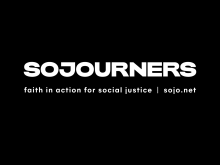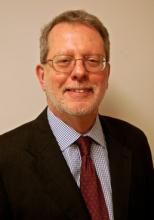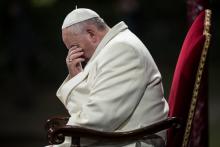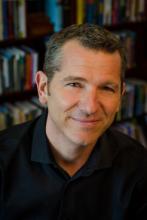Economic Justice


The interesting thing about human nature is that even among the oppressed, people will seek supremacy, a pecking order. We human beings have great capacity for tenderness and compassion, and we’re also the meanest things in the world! And even when we are oppressed together, we will try to find some advantage or superiority over others.
“As for you, my flock, saith the Lord, I shall judge between sheep and sheep, between rams and goats. Is it not enough for you to feed on the good pasture, but you must tread down with your feet the rest of your pasture?”
In other words: Do you have to get what’s yours and at the same time mess it up for others?
FIFTY YEARS AGO, on Aug. 20, 1964, President Lyndon Johnson signed the Economic Opportunity Act into law. It had already been a momentous year. The Civil Rights Act was signed in early July, ending legal segregation. Mississippi Freedom Summer was underway, with hundreds of volunteers joining in voter registration campaigns. The effort to overcome poverty was the next step toward economic empowerment.
The Act created 11 different programs, including the Job Corps, Neighborhood Youth Corps, Volunteers in Service to America (VISTA), and both rural and urban Community Action Programs. Collectively referred to as the “War on Poverty,” the programs were coordinated by the Office of Economic Opportunity. In 1965, Medicaid and Medicare were created to provide health insurance for people in poverty and the elderly, and Title 1 of the Elementary and Secondary Education Act provided funding to school districts with students in poverty. It was the most comprehensive package of social legislation since the New Deal.
Results of the programs have been mixed, with the most striking gains for older Americans. According to a special report from U.S. News & World Report, “While the national poverty rate has ultimately fallen by 4 points since 1964, when the War on Poverty began, from 19.0 in 1964 to 15.0 percent in 2012, the poverty rate for people over 65 has plummeted by more than two-thirds, from 28.5 percent in 1966 to 9.1 percent in 2012.” But with the poverty rate still at 15 percent—46.5 million people in the country currently live below the poverty line—where do we go from here?
We are still in a period of high unemployment, and wage growth is stagnant for many of those who are able to find work. Issues of a living wage, child care, and disintegrating communities continue to need attention. Our economy is rapidly becoming more unequal, with a staggering concentration of wealth held by the very few at the top. All of these factors work against a serious effort to overcome poverty.

Irresponsible. Foolish. Impulsive. Recent college graduates with substantial student loans are sometimes regarded in these terms. Those who attended college decades ago, with a $15 per credit hour, may assume that these graduates are spoiled Millennials who “should have known better” than to agree to the loan terms.
ECONOMIC INEQUALITY ISN'T NEW. But this spring it became trendy, especially after Pope Francis dropped the tweet heard ’round the world in April: “Inequality is the root of social evil.”
Around the same time, Capital in the Twenty-First Century—a just-short-of-700-page book by French economist Thomas Piketty—became a best seller. Piketty, while not quite as concise as the pope, also sees wealth inequality as a problem—he focuses on its damaging effects on democratic institutions. Using extensive data, Piketty makes the case that escalating wealth inequality is built into capitalism. Without specific interventions, he writes, our politics and culture will be dominated by a small elite controlling vast amounts of primarily inherited wealth. It might create a new Gilded Age for some, but it won’t be any shinier for regular folks than the first one a century ago.
When class and economic status become news, the conversation tends to get a little shrill. Terms such as “Marxist” and “anti-business” were tossed around freely in reference to both Piketty and the pope. Some, of a more spiritual bent, sought to warn the pope and other Christians who decry inequality about the biblical sin of “covetousness,” offering reminders of the virtue of hard work. (I guess the hidden message of the parable of the rich man and the beggar at his gate is that Lazarus is envious; the real issue must be Lazarus’ poor work ethic and lack of get-up-and-go!)
But the inequality gap should be of concern to everyone, whatever their income or ideology. The point is not the fact that there are differences in wealth—those exist in any human society. And it’s not necessarily helpful or productive to seek scapegoats or assign broad characteristics to particular classes; neither poor people in general nor rich people in general are inherently noble, lazy, or scheming—temptations may vary, but good and evil can be found in people of every economic status.

The concept of social entrepreneurship, which can be defined as the use of entrepreneurial and innovation principles to promote social change, is not new. It’s been rebranded with a trendy name, but the concept of developing new ways to solve social problems has existed for ages as a key mechanism to promoting social justice. So why aren’t more Christians prominent in today’s social entrepreneurship movement?

RURAL COMMUNITIES in the U.S. wrestle with many of the same problems facing the rest of the country—persistent unemployment, access to quality health care, air and water degradation, a broken immigration policy. Other issues—such as supporting sustainable farming practices and drawing young people into agriculture, lack of broadband access, and the challenges of small-town economic development—are more unique to rural life.
Even though the 46.2 million people living in rural U.S. counties constitute only 15 percent of the country’s total population (spread across 72 percent of the nation’s land area), we are all connected—urban, suburban, and rural—by foodways, waterways, wilderness areas, and our national politics. As one Midwest-based organizer put it, “many progressives fundamentally don’t understand rural America—they don’t even know why they should care about it. You can’t understand the power of the tea party without understanding rural America. It is the key to the House of Representatives, and progressives will be hamstrung until they can make inroads in a few key congressional districts.”
But that organizer and others also draw power and hope from the deep history of populism in the rural Midwest and parts of the South, and the endurance of community-oriented values that aren’t just “heartland” clichés.
While many young people are itching to leave rural areas and small towns—anxious to find better jobs, educational opportunities, or city culture—others have always stayed put or returned after time away. And some “city cousins” move to rural America, enjoying the opportunity to work on issues they care about (with the bonus of a brilliant night sky). Here are four stories of young people investing in rural communities in the Midwest. —The Editors
“It makes a difference in the lives of people.”
Rae O’Leary, 29, is a respiratory therapist and nurse on the Cheyenne River Indian Reservation in north-central South Dakota. The reservation straddles two counties, the fourth- and 11th-poorest in the nation. O’Leary works for Missouri Breaks Industries Research Inc. in Eagle Butte, the reservation’s hub with a population of about 1,300. She lives 20 miles out, on a ranch with her husband and two young children. O’Leary is a member of the Turtle Mountain band of Chippewa; her husband is a member of the Cheyenne River Sioux Tribe, and their children are enrolled in that tribe.
“When I define how rural we are, I tell people our nearest Wal-Mart is two hours away. That’s my point of reference for city folk.

IN 2006, A MAJORITY of Michigan voters amended their state constitution to outlaw the use of race in college admissions. Supporters of affirmative action challenged that amendment in court; in April, the U.S. Supreme Court (in a case known as Schuette vs. Coalition to Defend Affirmative Action) affirmed Michigan’s right to ban the use of affirmative action by public universities.
Justice Sonya Sotomayor issued a 58-page dissent with a blistering critique of the court’s ruling. Sotomayor pointed out the illogic of the majority opinion that the case was about the voters’ right to self-governance. “This case,” she wrote, “is about how the debate over the use of race-sensitive admissions policies may be resolved ... that is, it must be resolved in constitutionally permissible ways.”
Sotomayor explained in her dissent that “by permitting a majority of the voters in Michigan to do what our Constitution forbids, the Court ends the debate over race-sensitive admissions policies in Michigan in a manner that contravenes constitutional protections long recognized in our precedents.” In other words, if we allow the majority to rule without limits, then affirmative action is effectively dead.

THE PHRASE “POVERTY in America” still conjures up, for many of us, images of a homeless person begging on an urban street corner or a dilapidated shack in rural Appalachia. But a report this winter presents a very different picture of poverty in the U.S.: “a working mother dashing around getting ready in the morning, brushing her kid’s hair with one hand, and doling out medication to her own aging mother with the other.”
The study released in January by The Shriver Report, “A Woman’s Nation Pushes Back from the Brink,” examined the rates of financial insecurity among U.S. women. The report notes that the average woman is paid 77 cents for every dollar the average man earns, and that closing this wage gap would cut the poverty rate in half for working women and their families.
A few years ago, I was at a global women’s conference looking at the economic dimensions of women’s realities when I first heard the phrase “time poverty,” in an academic talk given by a sociologist. The phrase captured the deeply insidious economic realities that are holding back women’s equality. Most mothers know this reality as we multi-task through our day trying to hold life together for our families. Women everywhere carry the double burden of working outside the home to support their families while still doing the large majority of unpaid domestic work.
The phrase “time poverty” stuck with me and, strangely, captures my reality as a mother of three leading a relatively privileged life. For those of us in the mothering season of life, all over the world, time is not exactly on our side. From sunup to sunset, we find ourselves constantly multitasking, moving as fast as possible and feeling like the hub in the middle of everyone’s wheel. Any tiny setback—a lost pacifier, a sick child—can threaten the whole highly tenuous ecosystem of the day.

The two most critical requirements for democracy are freedom of the press and an educated citizenry.
The one informs the people and brings government and power into the open. The other enables people to comprehend information and to discuss opinions without resorting to panic and violence.
Power elites have declared war on both requirements.
These include “big money” oligarchs, such as the people who gather around the Koch brothers, politicians who cater to the wealthy in exchange for campaign contributions and government officials who have come to identify with the corporate and financial interests they regulate.
Through acquisitions of newspapers and television outlets and intimidation of reporters, these power elites seek to turn the press into propaganda vehicles and to distort information.





RECENTLY, the U.S. celebrated the 60th anniversary of the landmark Supreme Court case Brown vs. Board of Education that declared unconstitutional state laws establishing separate public schools for black and white students. By winning the Brown case, Thurgood Marshall broke the rock-hard foundation of racial barriers between black and white schools in the U.S.
But the civil right of equal opportunity for equal education never ensured the human right of equal access to it. Thus the explicitly racial divide, reinforced by law, was replaced by a close kin: the poverty divide, reinforced by economic blight entrenched by white flight to the suburbs.
Ten years later President Lyndon B. Johnson took a bulldozer to that new economic divide by declaring, in his January 1964 State of the Union address, an unconditional “War on Poverty.” He said, “Let this session of Congress be known as the session which did more for civil rights than the last hundred sessions combined.” And it did.
EVERY WAR HAS multiple fronts. Johnson’s fight against poverty was a legislative one, which played out in states, cities, and school districts across the country. Within two years Congress had passed the Civil Rights Act, the Food Stamp Act, the Economic Opportunity Act, and the Social Security Act. Each act was a legislative beachhead in the assault against U.S. poverty.
The Elementary and Secondary Education Act of 1965 represented a major shift in the way the U.S. conceived public education. In this act, Johnson took direct aim at the economic infrastructure that barred blacks and other impoverished people from accessing equal education.

RECENT YEARS HAVE witnessed a deluge of headlines such as “Jobs Become More Elusive for Recent College Grads” from Reuters and “For Recent College Grads, Recessions Equal Underemployment” from Inside Higher Ed—headlines that make even the most hearty college students experience heart palpitations. According to a 2014 analysis by the Federal Reserve Bank of New York, “the underemployment rate for 22-year-olds is about 56 percent, indicating that more than half of the people just graduating end up working in jobs that do not require a degree,” jobs for which they are overqualified.
To put this into perspective: I am a 22-year-old senior at a private Christian university. Of my close friends who graduated in the last year or two, the only ones who were able to find jobs in their fields were education and nursing majors.
Don’t get me wrong, I love liberal arts and feel grateful for the critical thinking skills, study-abroad opportunities, and philosophical discussions that attending a liberal arts school has afforded me. But learning in the same analysis that “only 40-to-45 percent of recent college graduates majoring in communications, liberal arts, business, and social sciences were working in jobs that required a degree” is troubling at best.
In addition, seven out of 10 college seniors are graduating with an average of $29,400 in debt due to rising tuition costs for an undergraduate education. The National Center for Labor Statistics found that in the past decade, the cost of “tuition, room, and board at public institutions rose 42 percent after adjustment for inflation.” The situation was a bit (though not much) better at colleges in the private not-for-profit group, like my own, where the average price rise was 31 percent.


The latest dust-up about the unscripted words of Pope Francis came this week when he tweeted, in Latin, “Inequality is the root of social evil.” Conservative Catholics had their underwear in a bundle, nervously tweeting away about the dangers of addressing complex issues on Twitter, and warning about thinking that “redistribution” would solve global inequities. Some feared this was giving Thomas Piketty’s new popular book, Capital in the Twenty-First Century, more press. Liberal Catholics were delightfully surprised, once again, and argued that the pope was doing nothing more than putting Catholic social teaching into a tweet.
Inequality is the root of social evil.
— Pope Francis (@Pontifex) April 28, 2014But this latest interchange, happening of course between Catholics in the global “North,” misses the real point.

Despite progress in defeating extreme global poverty, most Americans see no end in sight, according to a survey sponsored by Compassion International.
Christians who attend church at least monthly and consider religion very important in their life overwhelmingly (96 percent) expressed concern about the world’s poorest people. But they were skeptical that global poverty could be ended in the next 25 years. Only 41 percent of the group said it was possible.
And yet Scott Todd of Compassion International, the Christian nonprofit agency that sponsors 1.5 million children abroad, remains upbeat. He sees hope in the numbers of “practicing Christians” who express concern about poverty and a willingness to do more.